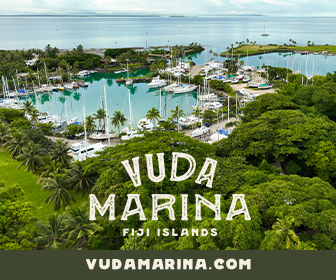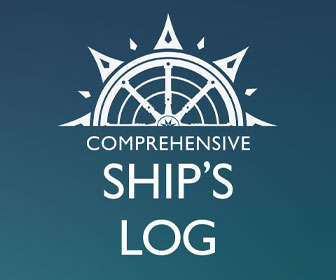French Polynesia: Six months cruising the Tuamotus
US cruisers Scott and Kathy Erwin chose to spend one year in French Polynesia, six months of which they spent cruising the remote Tuamotus Atolls. In this report, Kathy outlines the route they took around the archipelago and the highlights of their time in these remarkable islands.
Published 6 months ago
Sailing the French Polynesian waters of the Tuamotu Archipelago is an amazing experience. Scott and I chose to stay one year in French Polynesia, so in early April ’23 we headed from the Marquesas directly to the Tuamotus. We spent most of the six month sailing season in and around about eight atolls.
If you glance at a map, you will see these islands are all similar and mostly aligned with the SE trade winds, which makes for excellent travel in this direction. Our experience was fabulous; the beauty of the pink sand beaches, reefs, sunsets, and sealife here are remarkable.
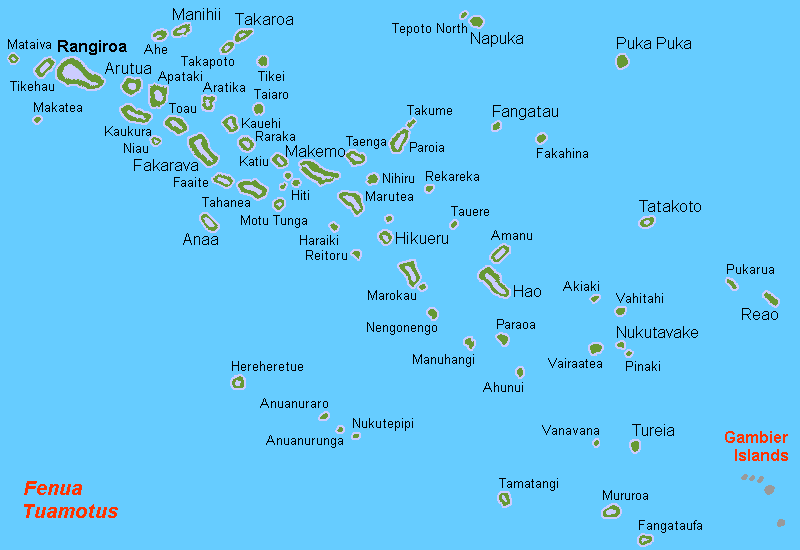

Our Route through the Tuamotus
Amanu:
We sailed Sea Bella from Fatu Hiva, aiming as high on the wind as possible, sailed three days and landed in Atoll Amanu, a darling sleepy village which had the youngest Mayor in all of France. Two highlights; the children were so playful and engaging and the small reef in the middle known as Star Island was a colorful dream.
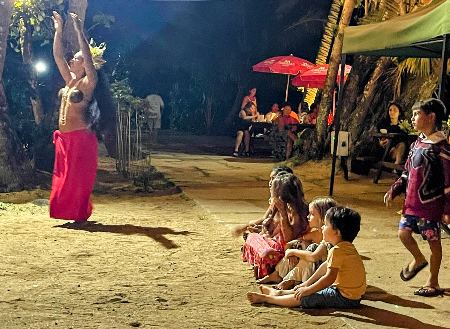

After a few weeks and not much for provisioning, we headed to the atoll Makemo, which also has a quaint happy town. This is our favorite atoll for snorkeling the many coral heads. Their colors and formations are vivid and just so healthy, not to mention the intense blues and purples of the clams. A quick change in weather had us running to a safe anchorage at the most southern corner, but the fetch and craggy bommies were still an issue. Some boats’ had their windlass’ break and others’ bridles broke, not to mention some lightning damage.
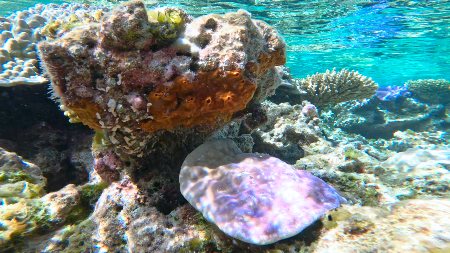

Tahanea:
Ready for change, we had an excellent downwind sail to Tahanea with a few boat friends. What an amazing atoll for diving or drift snorkeling all three passes. Daily the temperature never was over 85 degree or under 79. The water temperatures were always over 80 degrees. The coral reefs were healthy and such fun to snorkel daily in. Its very important to always note the tides in the passes and snorkel on slack to incoming only.
Enjoying the quiet anchorages with just four to five boats was pure bliss for us nature lovers, but it’s not for every cruiser since there is no support, village or local people to be seen.
Kaeuhi:
Needing some fresh vegetables and fruit we headed next to the atoll Kaeuhi, which had a tiny market, but nothing fresh. We stocked up on canned and frozen goods and found most of the basic essentials.
This is typical in these remote islands with only one village of a few hundred locals, maybe 1 market, a bakery and 1 small restaurant. They don’t grow vegetables here because it’s all sand or rocky coral.
A supply boat will come every week or two, but often that is not when you are at the village. Wind shifts occur weekly, possibly making cruisers take cover many miles away from town. So, although breathtaking, we chose to move on to Fakarava, a well known dive spot of the Tuamotus.
We spent four weeks at a must-see anchorage Hirifa and a must-do scuba dive spot at the South Pass. Most cruisers have their own dive gear, and it’s simple and cheap to refill your tank at the dive shops. Small guided boat dives are also available daily. Hanging out with 30-40 other international cruisers; diving, snorkeling, beach games, bonfires, wind sports – all was an excellent time. Again, needing fresh foods and since we had some lightning damage to our diodes, we needed marine services in Tahiti where we went for a month.
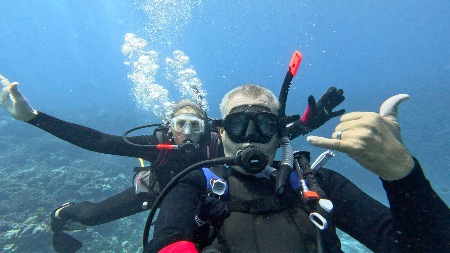

Return to Tahiti:
Anchoring here is nearly non-existent. The two main marinas, mechanical services and marine supplies were excellent. However, we did not care for the busyness of Tahiti much at all, kind of pricey, very spread out with confusing bus schedules. After provisioning for another four months, we stopped over at marvelous Moorea and reversed back down to the Tuamotus (prior to returning to the Marquesas for storm season).
Our first stop was Tikehau for a week in August, unfortunately it was upwind, so we motorsailed. There are two must-see spots here, but possibly only seasonal. One is a snorkel spot where the graceful reef mantas get their mouths cleaned by little blue fish. The other is an amazing group of thousands of fish just outside the pass. The best advice with finding the special secrets on the Islands is to ask a local, they are thrilled to help or even take you there.
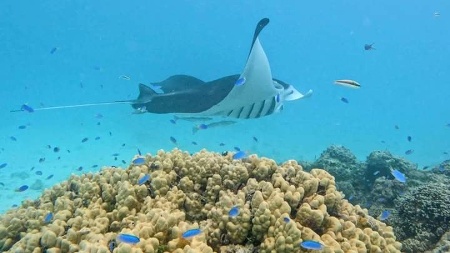

The next atoll on our list was Rangiroa, well known for its excursions. The majestic Blue Lagoon was stunning and a dive with dolphins, who playfully jump in the waves of the passe. Again, we found the people, village, anchorages, beaches all a peaceful delight.
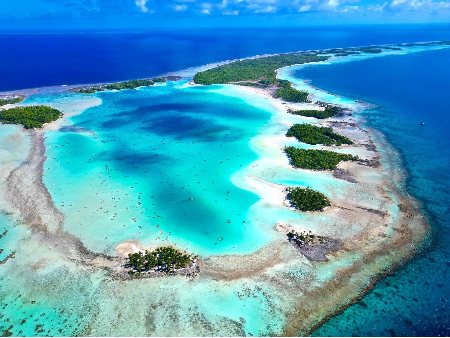

Toau: After a few weeks, we sailed upwind to Toau, pleasant, small, and simple.
If you glance at a map of the atolls, you will notice they are mostly in a line that follows the SE trade winds. Good for going NE but more tricky to go SE. If a cruiser is planning on heading back to the Marquesas for storm season (which seems to be the most popular and safest option) route planning and weather watching is a must.
Which is exactly why we island hopped back upwind to Fakarava (3 weeks), Tahanea (3 days) Makemo (2 weeks ) and Raroria (1 week). Overall, these sandy atolls were very similar and we thoroughly enjoyed the slow pace, meeting the locals, swimming daily in 80 degree waters, and communing with the cruisers.
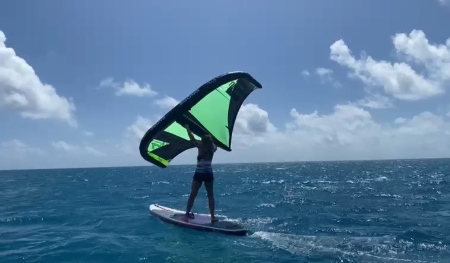

Tuamotus Essentials
Weather:
The weather here is typical of the South Pacific, warm and humid with a constant ocean breeze. Mainly blue skies with some white puffy clouds on the horizon which make for terrific sunrise and sunsets. It’s been in the low 80s all winter, with 75% humidity. Once a week or so we had a full day or two of heavy rain. Solar power and battery management is daily of course. UV Shade and rain tarps are a must, as living on a sailboat you always are managing water, leaks, mould and heat.
Navigation:
Navigation is at its most extreme in the coral reefs of French Polynesia. There are no paper charts, no depth soundings and mostly no navigational marks in the waters or in sailing apps such as Navionics. Most cruisers download files called OpenCPN for the coral heads and a crew member is always on lookout (best if it is sunny and daytime). Satellite imagery is the key to sailing in the Tuamotu Atolls, since it’s one of the most remote places in the world. Cruisers rarely, if ever, traveled these atolls until recent years when satellite imagery was married to GPS positioning.
In and around all these atolls and anchorages you can see coral heads or “bommies” as they are called here in Polynesian. A respectable and necessary practice here is to float your anchor chain, floating above these bommies, with 4-5 floats (see our video Floating your anchor chain above the coral heads).
Provisioning:
Most Atolls in the Tuamotus are very remote and only have a very small village with maybe a market or two. Shipments of foods and drinks come every week or two from Tahiti. Buying the French baguette or croissant is the excitement of the morning and a cruiser is lucky to find a few fresh vegetables or fruit. The people here are very friendly and helpful. It’s really a happy place. Although again, it’s very unusual to find fresh produce, so stocking up with canned or frozen foods is important.
A Typical Day Cruising the Tuamotus:
A very typical cruiser schedule in the Tuamotus is ‘early to bed early to rise’ as is with most remote cruising experiences. Mornings are usually lazily spent reading or on Starlink, researching the area, conditions, resources, or making a family call or one to a mechanic, but hopefully not. After the DIY boat projects and repairs are done, most sweaty sailors are ready to snorkel a reef, have fun with water sports, or explore the Motu.
Most anchorages in the Tuamotus Archipelago are extremely remote, without a village or house for 10 miles. And as for a marine services, there is only one area and that is in Tahiti 300-600 miles away. So, cruisers rely on each other. Most people want a sense of community, support and friendship. It’s typical that cruisers end most days with a social time (boaters are from all around the world out here, so multi languages is common in the anchorages) people are ready to gather up for social hour, usually at a close beach, to meet new friends, share stories, drinks and snacks, discuss weather, sailing, projects, local news, travel ideas, and maybe play some games. These months in the Tuamotus I learned that every day is kind of the same, but by far, the people and beautiful places make it a unique cruising ground.
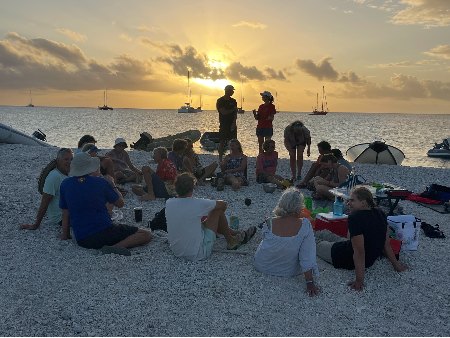

Since the sailing season ends in October, it seems that most boats had either hussled on to Fiji or circled back to the Marquesas for cyclone season. We thoroughly enjoyed having our one year visa, which provided us time to cruise slowly amongst the remote Tuamotu Atolls of French Polynesia.
Kathy Erwin
SV Sea Bella
…………………………..
About the Author:
After 11 years of dreaming and then planning, US sailors Kathy and Scott Erwin started their cruise into retirement in August 2021 when they left their home base in California and headed for the warmer waters of Mexico. They are currently spending a year in French Polynesia with a plan to head westward across the Pacific, but admit that it is a plan that is written in the sand at low tide.
…………………………..
Related Reports:
Related to following destinations: Apataki, Fakarava, French Polynesia, Makemo Atoll, Manihi Atoll, Marquesas, Rangiroa, Tikehau Atoll, Tuamotus
Related to the following Cruising Resources: Circumnavigation, Circumnavigation, Pacific Crossing, Pacific Ocean South, Routing




